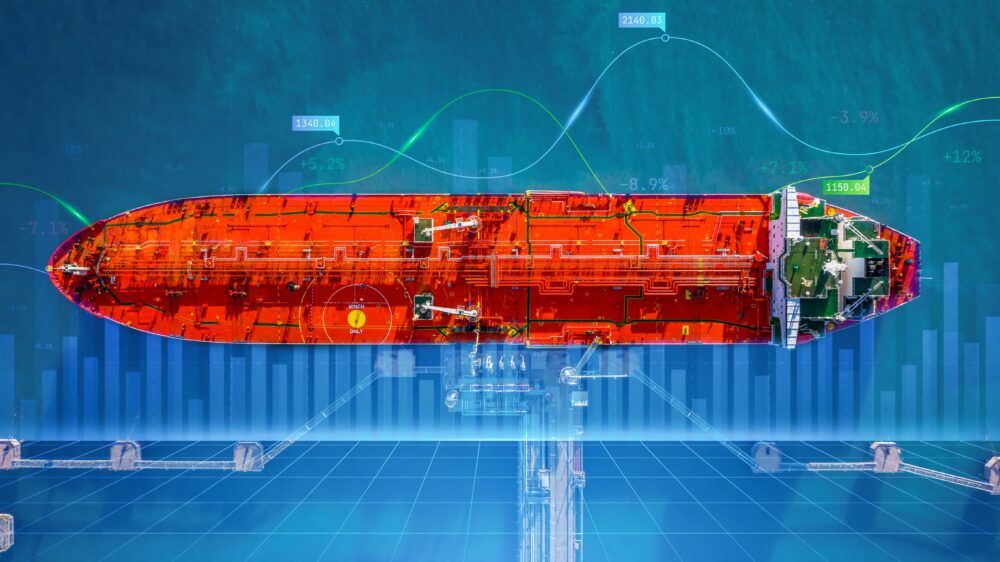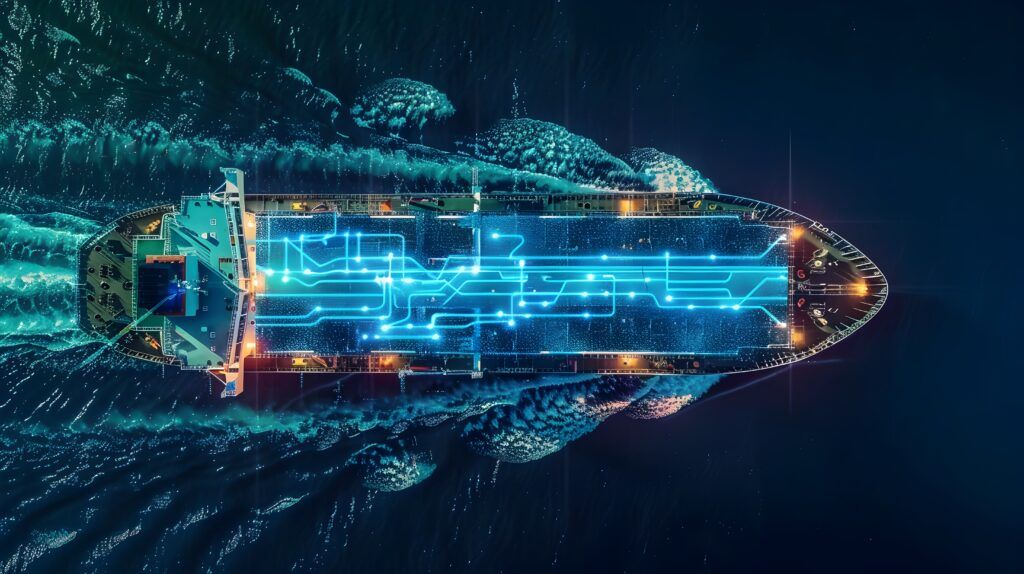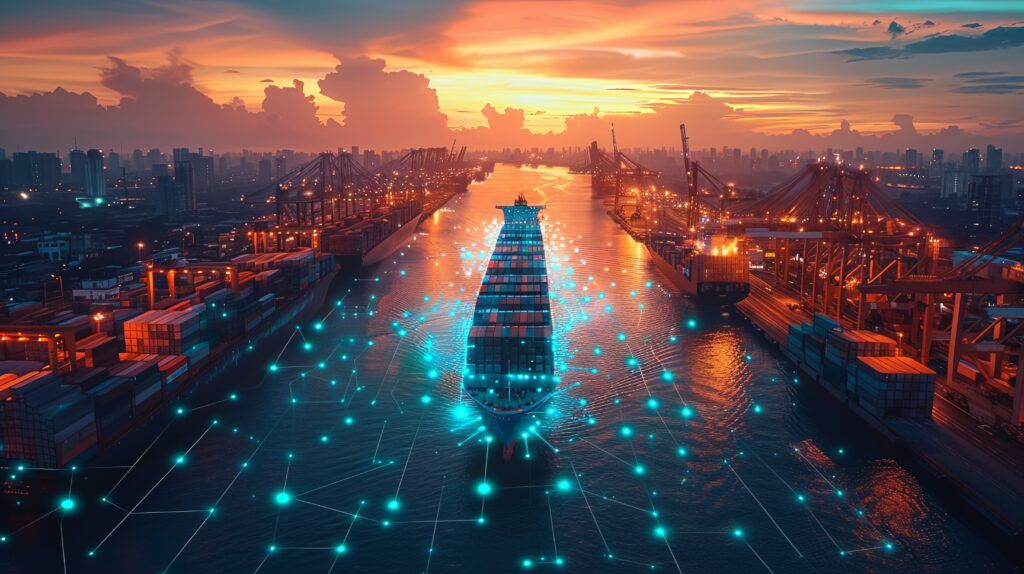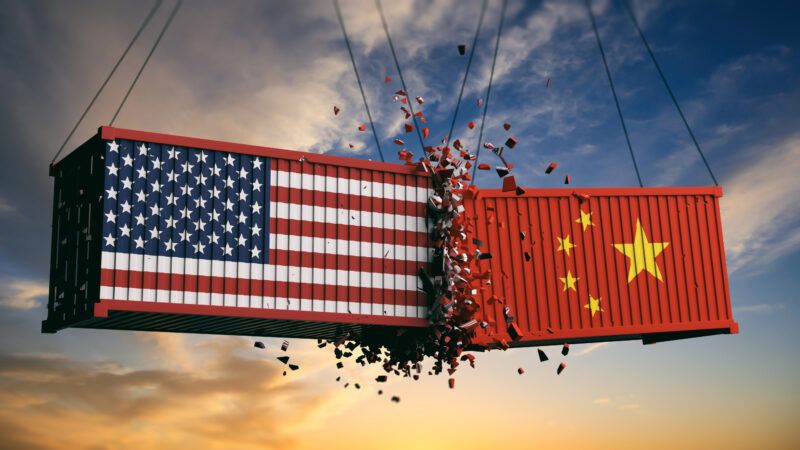
Artificial Intelligence in the maritime and port sector, under debate
Artificial Intelligence was the subject of discussion during the last Smart Ports in Barcelona. PierNext attended a three-way conversation between a port representative and two smart solution providers. They brought different but at the same time complementary visions on the technology that is generating more 'hype' in recent years.

And so, talking precisely about 'hype' or whether the expectations generated by Artificial Intelligence (AI) are justified or not, began the roundtable between Paola Sanchez, head of GreenwAIs solutions at Aggity Europe; Sheeba Varughese, chief information officer of the Port of Los Angeles; and Sergi Lopez, head of sales of Envizi ESG Suite at IBM.
PierNext was present and this is the highlight of the meeting.
Areas where AI makes a difference
For Angel Harbor representative Sheeba Varughese, AI is definitely a technology with transformative power, although she is skeptical of the unanimous reaction.
“Sometimes it feels like it's going to change the way we live as humanity. I think that's a bit of a stretch, but we definitely have opportunities to capitalize on the benefits of AI. In our case, we have started this journey very cautiously and not using it generically, but for very specific uses,” she reasoned during her invervention at the latest Smart Ports.
Varughese explained the use cases his port is making of AI, while the other two experts offered other avenues where it is already being used or there is great potential for use.
- The first one mentioned is cyber resilience.
“Currently, we are testing an AI application todetect deepfakes or possible impersonations via email, video or phone,” Varughese shared.
Sergi Lopez, from Envizi ESG Suite at IBM, in line with the Los Angeles use case, pointed out that the issue is to have the ability to manage the massive information generated by these videos, audios and texts, since it is, pure and simple, data. “And AI is going to transform all this amount of information instantly to help us make decisions in specific use cases like this one,” he explained.
- Follow-up of operations
Another added value that AI can bring is linked to port operational efficiency. “Every day there are thousands of movements and this technology can help us make decisions that improve the volume of operations. This is one of the main objectives, to improve efficiency and, therefore, sustainability,” Lopez added.
Paola Sanchez extrapolated this to the maritime transport and logistics sector as a whole, adding that data such as weather forecast data is used to create more efficient routes. She also cited its usefulness in cargo loading and unloading operations.
“In addition, we have been devising use cases with customers in different industries where we take into account maintenance data to optimize AI and make it predictive. This way, you can extend the life of assets and reduce downtime. It's about having the right data and being able to predict where operating expenses are going,” she said.
- As a tool of Port Community Systems (PCS)
Port Optimizer is the Port of Los Angeles' PCS, which Varughese explained is working to add a feature that will allow scheduling shifts for trucks loading and unloading at the facility.
“We have multiple terminals at the port and each operator has its own system that trucking companies must refer to individually to book, modify or cancel. The port is going to design a universal system with an AI that will be integrated into our PCS to centralize and provide an intelligent solution to this operation,” she shared.

Artificial Intelligence, an ally of sustainability
The latter example will also allow the port to regulate truck traffic and thus emit less. The latter will, in turn, be able to save fuel.
Paola Sanchez, head of GreenwAIs solutions at Aggity Europe, continued along these lines: “Optimizing routes allows you to consume less GHG emissions and comply with regulations in different markets,” she shared.
For Sergi López, basically, it has to do directly with the idea that what can't be measured can't be improved.
“First of all, you have to be able to collect all this data. The stakeholders that are part of my value chain are going to be willing to share them with me, but we will have to sift, analyze and, finally, figure out the right patterns that will help me decide what is the most appropriate decarbonization action,” he reflected.
For the expert, this goal should be a common objective, as well as how to collect and share data, which should be agreed upon beforehand, especially to comply with current data protection laws.
The chief information officer of the Californian port shared that they are also working on a use case related to that scenario and that it is part of their next implementation plan that will take place in about 18 months.
“We are trying to take advantage of data that is already available, such as emissions and clean air inventories. There is a lot of information that has already been collected, but it's in different systems. We want to bring it together in our PCS, in a module we're building called the 'carbon intensity gateway,'” Varughese explained.
The system will then be able to score the intensity level of certain routes and gather information to build predictive models. “What we hope to achieve is that shippers will know what is the most optimal route they can take and what combination can help them generate the least amount of emissions possible,” she announced.
Although this system is intended for third parties, Varughese said it will also benefit his bottom line as a port authority and, in the process, bring benefits to his community. “Reducing traffic is one of our top priorities,” she said.

AI challenges...is the industry ready?
Every transformation means a degree of adaptation, both for the sector and for the professionals involved, as they must learn new skills. López explained that IBM's social impact plan is offering free training in information technologies and, of course, in AI.
“This means giving the opportunity for that person to develop a new role to which he or she will probably have to adapt job-wise,” he said.
“There is a lack of skills, not only in AI management, but there are also concerns about the security of the application itself. Implementing AI as a large-scale solution poses a lot of challenges for the entire organization,” Varughese reflected.
For this reason, the Port of Los Angeles prefers to take things one step at a time. The CIO says the easiest thing to do is to implement an application that already inherently includes an AI solution.
One of the challenges for IT leaders, she continued, is to fit in a new solution and have it accepted by users who are often resistant to change.
“Although the case of AI I think the opposite is true, as many people want to use it because of the hype it generates, as it is perceived as a tool that can improve day-to-day operations,” she added.
And she posed a question: do we have the necessary skill set at the organizational level to support this solution and understand the concerns it generates? And he listed, in addition to security, others such as data privacy or confidential information, the management of which, by this technology, generates concerns.
“Training in the responsible use of AI is as important as finding a good solution. That's why I recommend all organizations to gradually enter this field. Personally, I advocate the adoption of new emerging technologies, but in this case it should not be taken lightly at the governance level and proper guidelines, research and evaluation should be implemented,” advised the Port of Los Angeles expert.

And the eternal question...will AI replace humans?
For the participants of the round table held at the last Smart Ports, AI is capable of automating some tasks that, instead of replacing certain jobs, will allow humans to develop higher quality tasks, based on intelligent decision making.
“It requires a change of mentality: from an organization structured in a traditional way to one that does so based on the information provided to us by data,” recommended Paola Sanchez.
To avoid frustration, the expert prescribed emphasizing both internal communication and employee education to assure them that they will not be replaced, but that their functions will simply change.
“There are usually two extremes: those who are very skeptical about technology and those who are eager to use it,” added the Port of Los Angeles expert, who said that in any case, what is not going to happen is a scene from a science fiction movie where machines are going to take over our lives.
“What it's all about is automating some of the repetitive, mundane tasks that don't necessarily require human intervention, such as summarizing an email or writing a report. That way we can free up time to spend on doing more valuable analysis and more meaningful work. In the same way, we need to curb those who want to jump in without sufficient information or knowledge base,” she justified.
Lopez was more specific. “Some specific roles will have to be addressed. I think the issue here is that in parallel to planning this implementation, we have to start thinking that we are going to need new profiles that will be in charge of collecting all this data to adapt it to the technology,” he suggested.
He cited as an example sustainability departments, which, he argued, tend to have few resources and small teams. “The day when, for example, an environmental engineer is taught that he will be able to use his time to focus on new projects and new activities that are going to help his company reach its goals instead of spending time on administrative tasks, his life will totally change,” he ventured.
The maritime industry is on the move, but it is also looking in profile at what is going on, whether AI is just another of the many technological hypes or whether it really has a transformative power that will change the industry forever.






